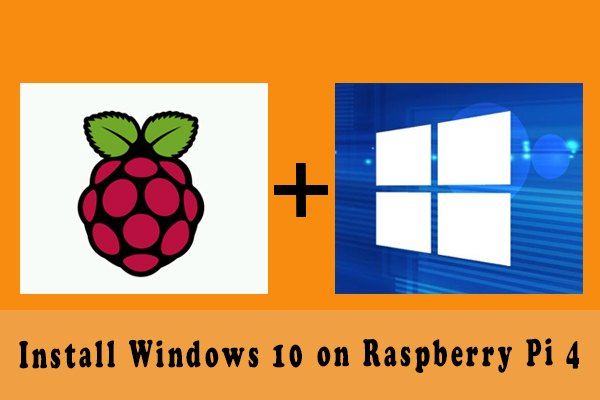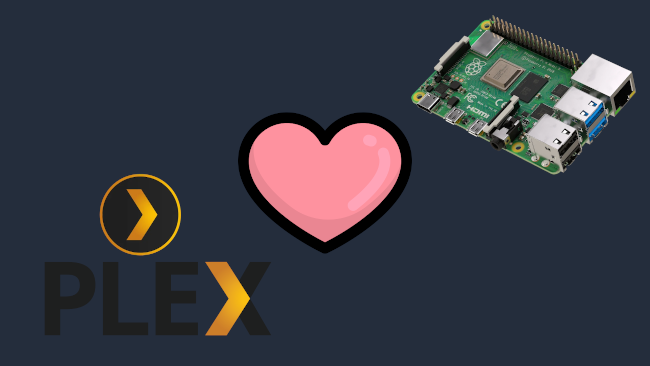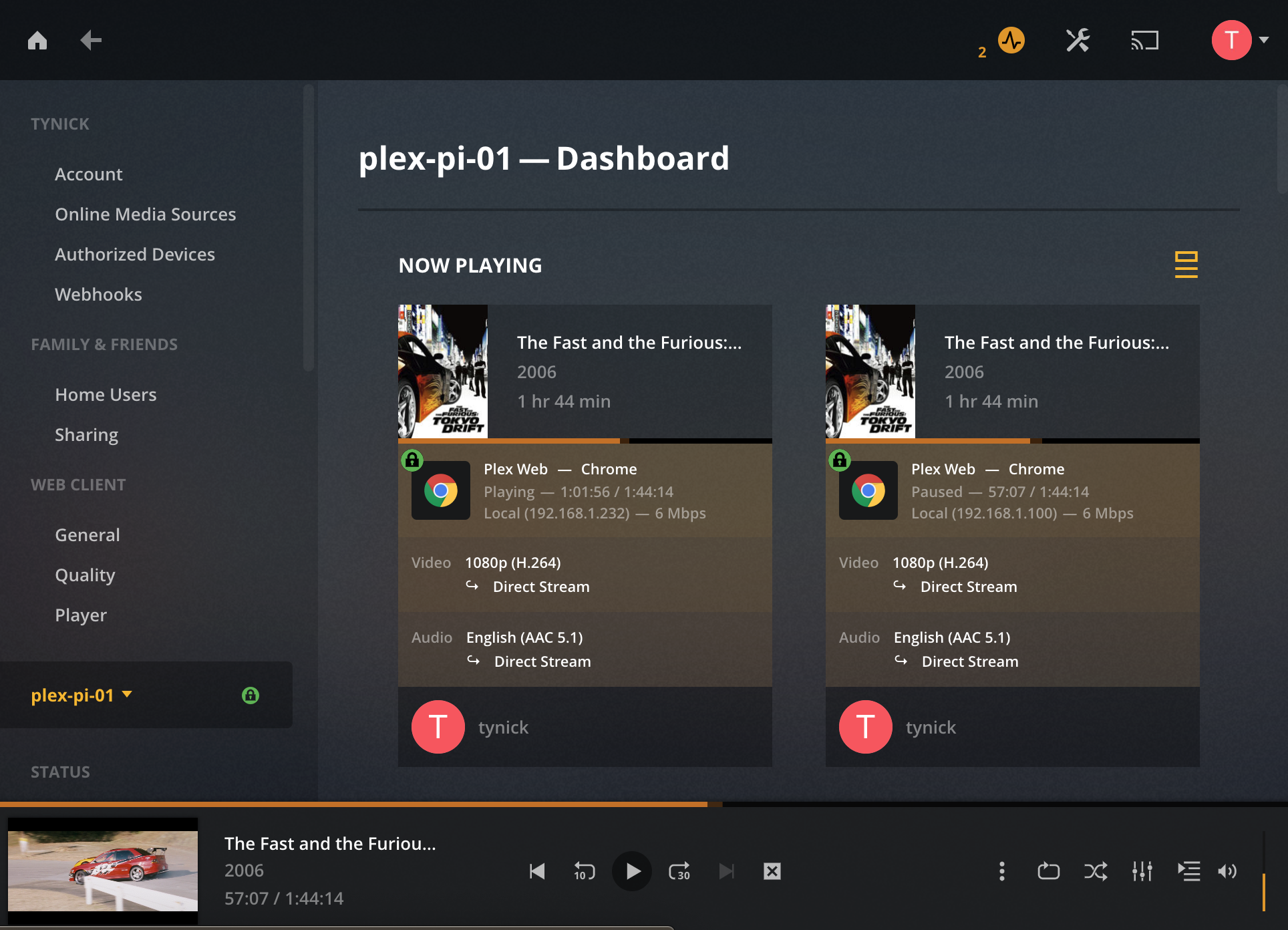

- #Raspberry pi plex server movie
- #Raspberry pi plex server install
- #Raspberry pi plex server software
- #Raspberry pi plex server tv
One way to specify the device to mount is to use the UUID, which you can find by running : In order to make sure that the disk is mounted in this way every time the Pi starts, we need to add an entry to the /etc/fstab file. We should now be able to see the files on the disk… To test mounting the disk on the mount point we’ve just created…
#Raspberry pi plex server install
Note that you may need to install an additional package to be able to mount ntfs disks ( although I already had this on my Pi).

The “/dev/sda1:” part of the output confirms that our disk is currently mounted as this device. The “TYPE=” part of the output identifies the file system type you will need to specify when mounting the drive. Next, we need to know what type of filesystem the external disk is using.Īlternatively, if you only have a single USB device connected to your Pi, you can filter out some of the noise… We should now have a directory that looks like this :ĭrwxrwxr-x 2 pi pi 4096 Apr 1 13:52 usbstorage In order to properly interact with the files on the external disk, we need to mount it.įirst of all, we need to create a directory on which to mount the drive.
#Raspberry pi plex server software
Wheezy), you may need to amend some of the commands that follow to use the appropriate repository for your version.įinally, before we go making any software changes, it’s probably a good idea to make sure that we’re all up-to-date on the Pi : If you are using a different version of Raspbian (e.g.

PRETTY_NAME="Raspbian GNU/Linux 8 (jessie)" One way of determining this is to run the following in a terminal :

It would also be helpful to know the version of Raspbian that’s running on the Pi. The first thing to note is that I’m connected as pi for all of the steps that follow. Now that’s done, we can get on with making the files on the hard-drive available to the Pi. Then we plug the hard-drive into the hub : So, we plug the USB hub into the mains and then connect it to one of the USB ports on the Pi. Therefore, we need to use a powered USB hub to connect the two. Unfortunately, the Pi does not provide sufficient power on it’s own. The hard drive is powered through the USB port it’s connected to. Hopefully after all that, I’ll be looking at something like this :īefore we do any of that however, we need to get the USB drive to work on the Pi…
#Raspberry pi plex server movie
#Raspberry pi plex server tv
At the moment, these files are only accessible from the smart TV it’s plugged into. We have a collection of movie files, which I’ve stored on an external USB hard-drive. The recent Bank Holiday weekend in England provided me with a perfect opportunity to get on with some D.I.Y.


 0 kommentar(er)
0 kommentar(er)
